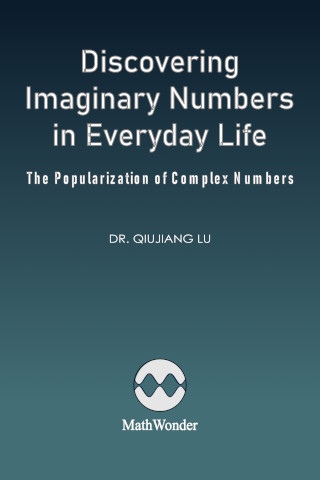
Discovering Imaginary Numbers in Everyday Life
The Popularization of Complex Numbersby Dr. Qiujiang Lu
Book description
The book is inspired by social media users’ exceptional laudation for the author’s work on redeveloping the foundation of complex numbers from the ground up through first principles. Nowadays complex numbers formed from imaginary numbers have widespread applications in mathematics, physics and engineering. But many learners still have difficulties accepting the existence of the imaginary unit 𝑖 because the property 𝑖² = -1 is used to define 𝑖 while 𝑖 itself is also used to define the property with 𝑖 remaining undefined despite the abstract representation in the complex plane.
Complex numbers were first introduced so that all polynomials would have solutions. Traditionally, a top-down approach has been taken in the development of complex number theory based on 𝑖² = -1. By contrast, the author’s work uses a bottom-up approach in which rotational numbers are introduced to rotate physical vectors through multiplication. As a result, the re-creation of the imaginary unit, complex numbers and Euler’s formula as well as the discovery of a rotational number set can then be achieved in the reality without relying on 𝑖² = -1. This removes learners’ skepticism about complex numbers by redefining the imaginary unit as a self-evident presence in daily life, and makes the complex plane interchangeable with the familiar x-y plane, which has a direct connection to the real world. The work opens up the opportunity to explore, extend and share the newly gained comprehensive understanding about complex numbers for the thorough demystification, popularization and empowerment to broader educational levels including elementary 6th grade and up.
Like the real number set for 1D (one-dimensional) arithmetic, the existence of the rotational number set gives rise to 2D arithmetic that greatly simplifies the learning by allowing elementary students to use the familiar position and rotation concepts of the physical world without the deep abstract knowledge behind complex numbers. The contemporary ubiquitous use of touch-screens on mobile phones indicates that selecting a point on a surface can actually be more primitive and intuitive than selecting a point on a line, making the 2D arithmetic more appealing. The goal of the book is to provide an essential read for anyone wanting to keep abreast of the latest understanding of complex numbers for inspirational learning and teaching.
Author

Dr. Qiujiang Lu is an independent researcher and software developer in Silicon Valley whose work has re-created the imaginary unit in real life from first principles, which remained unknown for 500 years since the inception. His past research had involved discovering the mechanism of ice crystal growth habit change, an outstanding problem for more than 50 years in cloud physics that is closely related to the “thousands’ variations” in snowflakes. His interests are in physics, mathematics, software, and their multidisciplinary applications.